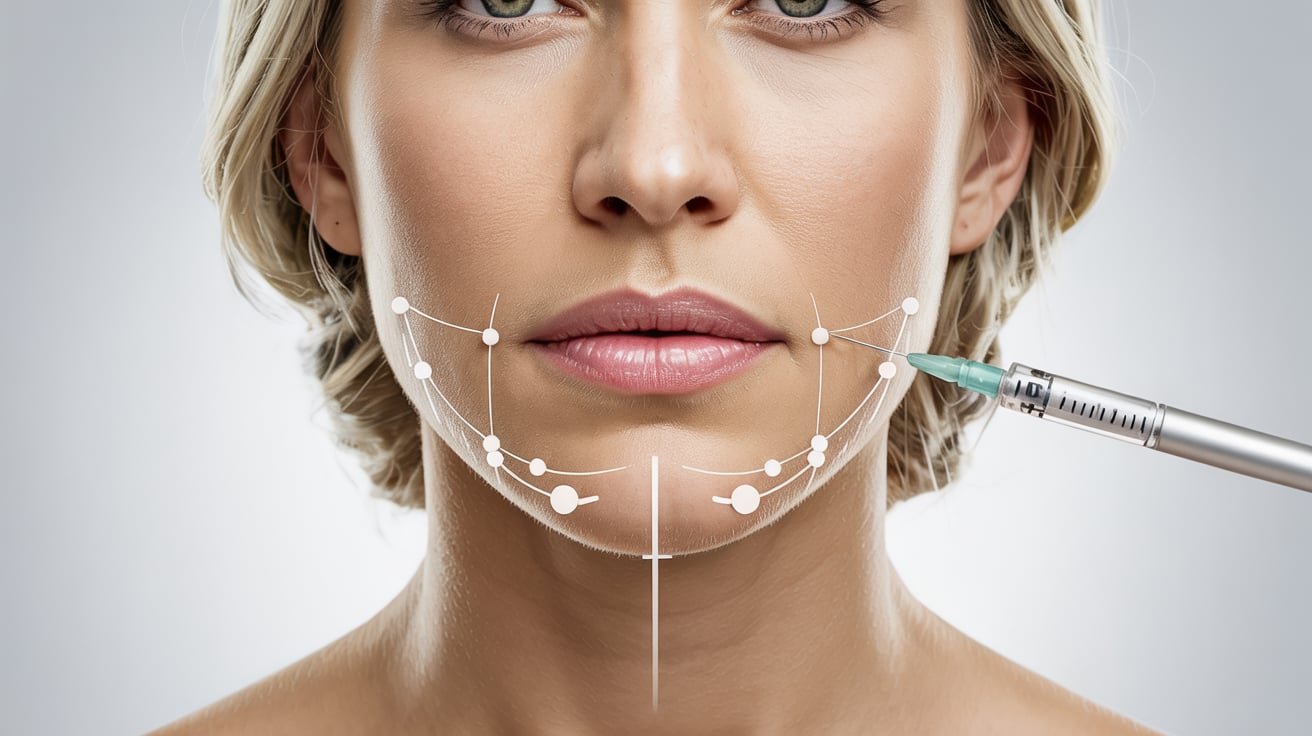Thinking about getting jaw Botox in Singapore? You should know what it is and what it involves first, then.
To start with, jaw Botox is also known as masseter Botox. The “masseter” comes from the name of the muscle in the jaw that helps us bite or chew.
As a cosmetic treatment, jaw Botox is generally used to shape the jawline – often to achieve a slimmer and more defined look, sometimes called a V-shaped appearance.
The procedure – How does it work?
Jaw Botox is a non-invasive procedure that temporarily reduces the activity of the masseter muscle, which can lead to a reduction in muscle size over time. The typical procedure is to take small injections of botulinum toxin and inject them into that muscle.
The process is fairly quick, often involving a mere 10 to 15 minutes. This is one of the cosmetic procedures where patients can resume daily activities immediately after treatment.
As for the effects themselves, they tend to present a while later. Most patients start noticing changes within 2 to 4 weeks of the procedure, with full effects visible around 6 weeks.
Results are not permanent, however. For most, they last anywhere from 4 to 6 months. Those who wish to sustain the results simply get maintenance treatments, i.e. repeat injections.
Benefits – What can it do for you?
Jaw Botox is chiefly performed for aesthetic reasons, as noted earlier. It’s a non-surgical solution for jawline shaping and facial slimming, offering a faster alternative to jaw reduction surgery.
However, it can also have functional benefits. For instance, jaw Botox is commonly used to manage bruxism (teeth grinding) and jaw clenching by relaxing the masseter muscle, which can help alleviate associated tension and discomfort.
That’s because the botulinum toxin relaxes the jaw muscles that are responsible for problems like that or TMJ pain. The result is a temporary ease in discomfort.
Side effects – Can there be unwanted results?
Like pretty much every other treatment, masseter Botox can have side effects. It’s largely safe, but unwanted results can present on occasion.
For example, some people see temporary swelling or redness at the injection site. Others report seeing mild bruising there as well.
Fortunately, these side effects usually subside within a few hours to a couple of days after the procedure.
More serious complications are rare but can include jaw asymmetry, difficulty chewing, or unintended changes in facial expression. These are usually linked to incorrect dosage or injection placement.
This is why it’s always recommended to seek someone with deep expertise in the procedure. It may be short, but it’s still best performed by someone with the skills and training to minimise the risk of unwanted results.
Maintenance – How often should you do it?
As mentioned earlier, the results of jaw Botox aren’t permanent. You need follow-up treatments to keep the look you achieve from your first procedure.
Individual situations may vary. For most people, maintenance treatments are recommended every 3 to 6 months, depending on how quickly the body metabolizes the botulinum toxin.
To be certain, consult a qualified practitioner. He or she should perform a thorough examination and study of your case before recommending a schedule for the follow-up.
